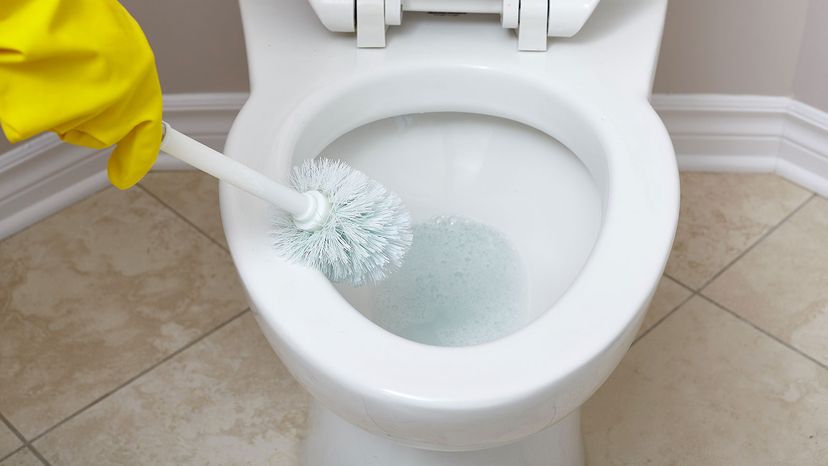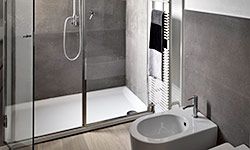
Is there any housekeeping chore worse than cleaning the bathroom? Most homeowners would say "no." From trying to move around in such a small room to inhaling noxious fumes from the cleaning fluids, cleaning a bathroom can be a frustrating experience. And if you have stubborn mineral stains, it's even more of a pain.
Believe it or not, mineral and rust stains in your toilet or tub — greenish stripes, a brown ring, lime scale — aren't caused by anything you're doing wrong in your cleaning regimen. It's simply something in the water. Calcium, lime, magnesium and iron, naturally found in hard water, attach to just about every surface they come across. Even if you have filters or water systems in place to soften the water, some of these minerals still slip through. The rust-colored stains you find under your faucets or in your toilet turn up when iron meets air. Green or brown stains in the toilet usually indicate lime buildup. Lime scale forms as hard water evaporates and leaves a mineral buildup behind. As it dries, it picks up any dirt particles along with it, and slowly the stain builds, layer by layer, on the inside of the toilet bowl. Yuck!
Advertisement
The good news is that many store-bought products and home concoctions can fight these stains. The bad news? Removing mineral stains requires some elbow grease, so don't expect it to be an easy process.
To get rid of these stains, you need some sort of acid. The most effective solution is muriatic acid, an extremely powerful and dangerous chemical. But we advise against using this unless you're a professional. If you want an off-the-shelf solution, consider Lime-A-Way or CLR (which stands for Calcium-Lime-Rust). Barkeepers Friend and The Works are also recommended, as well. For an organic home remedy, try vinegar, and — perhaps unbelievably — one of your favorite beverages. Find out more next.
Advertisement

